- Home
- James A. Michener
Mexico
Mexico Read online
Mexico is a work of historical fiction. Apart from the well-known actual people, events, and locales that figure in the narrative, all names, characters, places, and incidents are the products of the author’s imagination or are used fictitiously. Any resemblance to current events or locales, or to living persons, is entirely coincidental.
2014 Dial Press Trade Paperback Edition
Copyright © 1992 by James A. Michener
Maps copyright © 1992 by Jean Paul Tremblay
All rights reserved.
Published in the United States by Dial Press Trade Paperbacks, an imprint of Random House, a division of Random House LLC, a Penguin Random House Company, New York.
DIAL PRESS and the HOUSE colophon are registered trademarks of Random House LLC.
Originally published in hardcover in the United States by Random House, an imprint and division of Random House LLC, in 1992.
eBook ISBN 978-0-8041-5156-6
www.dialpress.com
v3.1
This book
is
dedicated to
Conchita Cintrón
La Superba
CONTENTS
Cover
Title Page
Copyright
Dedication
Author’s Note
Chronology
Maps
1 / The Cactus and the Maguey
2 / The Spaniard
3 / The Rancher
4 / The Indian
5 / Indian Ancestors: The Builders
6 / Indian Ancestors: The Altomecs
7 / The Critic
8 / Friday Fight
9 / The Meaning of Death
10 / Spanish Ancestors: In Spain
11 / Spanish Ancestors: In Mexico
12 / The Barbers
13 / On the Terrace
14 / Saturnine Saturday
15 / American Ancestors: In Virginia
16 / American Ancestors: In Mexico
17 / By Torchlight
18 / The Sorteo
19 / Sol y Sombra
20 / The House of Tile
Other Books by This Author
About the Author
AUTHOR’S NOTE
This is a novel, and the Mexican city of Toledo, its citizens, its Festival of Ixmiq-61 and the three bullfights described in the book are all fictional. The Altomecs, who play a vital part in the narrative, are a fictional composite of several ancient Indian peoples. However, the three toreros who participate in the Saturday fight—matadors Calesero and Pepe Luis Vásquez, and the rejoneadora Conchita Cintrón—are real persons in the history of Mexican bullfighting; I wanted to pay my respects to three friends who helped teach me about their profession. I must add, however, that the situations, incidents and dialogues concerning these toreros are products of my imagination and are not intended to depict any actual events or to change the entirely fictional character of this book.
CHRONOLOGY
INDIANS PALAFOXES CLAYS
500 Drunken Builders
600 Ixmiq begins career
650 Pyramid built
900 Nopiltzín discovers pulque
900 Palafoxes in Salamanca
1000 Altomec sacquire new god
1000 Clays are peasants in England
1130 War God empowered
1151 Altomecs take Toledo; Xolal slain
1171 Pyramid enlarged
1350 Mock battle Altomecs vs. Aztecs,
1470 Tezozomoc becomes leader
1477 Gray Eyes born
1497 Gray Eyes sees hideous goddess
1498 Antonio Palafox born
1503 Xóchitl born
1504 Alicia de Guadalquivir born
1507 Tezozomoc’s widow sacrificed
1519 Ixmiq sacrificed
1520 Stranger born; goddess destroyed
1524 Antonio Palafox to Mexico
1524 Clays become landowners in England
1527 City surrenders
1527 Antonio invades Toledo
1529 Professor Palafox burned at stake
1531 Building of cathedral at Toledo begun
1536 Palafoxes granted 250,000 acres
1538 Gray Eyes lectures
1540 Stranger baptized and marries Antonio first bishop
1540 Antonio marries Stranger
1544 Hall of Government built
1575 House of Tile built
1600–1700 4 Altomec girls marry Palafox bishops 2,3,4,5 and have 23 children
1600–1700 Palafox bishops 2,3,4,5 marry Altomec girls
1600–1606 Clays contemplate emigrating to America
1613 Clays arrive in Virginia
1726 Aqueduct built
1726 Clays acquire Newlands
1740 A major lode struck at 600 ft. at Mineral
1760 Cathedral façade is completed
1776 Clays fight in Revolution
1810 Palafox land cut from over a million to 500,000 acres
1823 Jubal Clay born
1830 Bulls come from Guadalquivir
1846 Jubal at war in Mexico
1847 Alicia in a China Poblano meets Jubal Clay
1847 Jubal at Mineral
1850 Caridad born
1864 Caridad in mines
1860s Palafox holdings reduced from 500,000 to 250,000 acres
1864 Jubal at Cold Harbor
1864 Clay plantation burned
1866 Clay leaves Virginia
1867 Maximilian executed
1867 Clay in exile
1874 Caridad marries Clay
1874 Clay marries Caridad
1881 Graziela Palafox born
1882 John Clay born in Toledo
1897 Eduardo Palafox born
1906 Graziela marries Clay
1906 John Clay marries
1909 Norman Clay born in Toledo
1910-1914 Revolution takes 150,000 acres of Palafox land
1911 Gral. Gurza storms Toledo
1917 John with AEF in France
1919 Gral. Gurza assassinated
1920 Pyramid and Cathedral published; Bull Soldado at Mineral
1928 Peace in Mexico
1928 John Clay working for oil company
1933 Palafox girl marries Norman Clay
1933 Norman marries Palafox girl
1938 Mexico expropriates oil wells
1938 U.S. loses oil wells; John and Norman exiles in Alabama
1942 Norman on duty Pacific
1945 Juan Gómez, 17, leaps into ring at Ixmiq-45
1950 Norman on duty in Korea
1961 Juan Gómez at Ixmiq-61
1961 Don Eduardo at Ixmiq-61
1961 Norman at Ixmiq-61
1
THE CACTUS AND THE MAGUEY
I had been sent to Mexico to cover a murder, one of a remarkable kind. And since it had not yet happened, I had been ordered to get photographs, too.
I was therefore burdened with unfamiliar gear—a large carrying case of Japanese cameras, some of which could photograph swift action occurring at a distance—and as my rickety bus trundled across central Mexico I wondered what I could do to protect these cameras if I followed my inclination to walk into the city from Kilometer 303.
I knew no one in the crowded bus and the cameras were far too valuable to entrust to strangers, so I resigned myself to staying on the bus and guarding them the seven remaining kilometers into the city. But as we approached Kilometer 303 the inchoate longing that had always possessed me at this curious spot in the highway surged over me with terrible force, and I was tempted to jump out and leave my cameras to chance.
Fighting back this childish impulse, I slumped in my seat and tried not to look at the road that had always haunted me, but I was powerless to keep my eyes away from it. Like many Mexican boys of good f
amily, at thirteen I had been packed off to Lawrenceville School near Princeton, “to learn some English,” my father had grumbled, and sometimes on the green lawn of that excellent school I had stopped and gasped for breath, choked by nostalgia for the road I was now on. Later at Princeton, where there were also many young men from Mexico, I would sometimes seek out boys who had known this area and I would ask haltingly, “Have you ever seen anything lovelier than the view of Toledo from that gash in the hills where the road winds down from Kilometer 303?” And if my friends had ever seen this miraculous spot for themselves we would indulge our homesickness and think of our city of Toledo, the fairest in Mexico, as it displayed its golden iridescence in the late afternoon sun.
As a matter of fact, I think I became a writer because of this scintillating view. It had always been assumed by my parents that I would graduate from Princeton as my ancestors from Virginia had been doing since 1764, and that I would then take one year of graduate work in mining at Colorado and return to the silver mines of Toledo, which my family had been operating for many years. But all this changed in my junior year at college, when I wrote a prize-winning essay that occasioned much favorable comment among the English faculty. It described the view of Toledo from a point just beyond Kilometer 303 as it might have been seen in sequence by an Aztec district governor in 1500, by Cortés in 1524, by a Spanish priest in 1530, by a German traveler in 1660, by an American mining engineer in 1866—that would be my grandfather—and by General Gurza in the revolutionary battles of 1918.
Actually, it is not correct to say that I wrote this essay that was to have such influence in my life. I started it, and the visions came to me so vividly, so directly from the heart of Mexico and from my own memories, that I merely recorded them. In a sense, this prize was a damnable thing, for long after I had become a professional writer I remembered the ease with which I had composed the essay. And I was never again to experience that facility. But the visions I conjured up that day have lived with me forever.
Now they possessed me, and I surrendered myself to them, my glowing memories of Toledo, and I was reacting to them in my sentimental way when I saw through the window of the bus a sight that captured my imagination. Two young Indian women wearing leather sandals, rough-cloth skirts and bright shawls, and with their hair in swaying braids, were walking along the road toward Toledo. Obviously, they were heading for the Festival of Ixmiq, the site of my assignment, and the soft rhythm of their movement, from the undulating braids down to their slim ankles, reminded me of all the Indians I had ever seen walking home from my father’s mines, and I wanted to be with them as I had been forty years ago, and I found myself impulsively shouting in Spanish, “Halt the bus! Halt the bus! I’ll walk in from here.”
As the surprised driver ground down on his ancient brakes and as they squealed back in protest, I looked hurriedly about the bus in search of someone to whom I could entrust my bag of cameras, and it may seem curious to a typical American who might have a prejudiced view of Mexico, but I could hear my Mexican mother saying: “In other parts of Mexico evil men may steal now and then, but in Toledo we have only honest people.” Deciding to rely on her judgment, I quickly studied my fellow passengers to identify someone I could trust.
I saw in the rear an unusual-looking fellow who was watching me with aloof but sardonic amusement. He was about twenty-five years old, blond, quite handsome and dressed in what young people called a Pachuca sweater, that is, a huge, woolly, loose-woven affair that looked more like a shaggy tent than an article of clothing. It was much favored by Los Angeles beatniks who were infesting Mexico under one pretense or another and had come to serve as a badge of distinction. Even if the young man had not had his conspicuous blond hair the Pachuca sweater would have assured me that he was an American, for no self-respecting Mexican would have used this sweater for other than its original purpose: to keep sheepherders warm in the mountain pastures.
“You want somebody …” the young man asked, leaning slightly forward.
“I wanted to hike into town.” For some unaccountable reason I added, “The way I did when I was a boy.”
“Memories?” the young man asked with amusement. He reached out with an indolent gesture to indicate that he was willing to carry my case and assured me, “I’ll sort of …” His voice trailed off.
At this moment an older man seated behind me intercepted me as I started passing the cameras back to the American youth, and in excellent Spanish asked: “Aren’t you John Clay’s son?”
“I am,” I replied in Spanish.
“I thought I recognized your father’s bearing. You want me to look after the cameras?”
I considered the question only for a fleeting moment, during which I compared the undisciplined young American lounging in the back in his ridiculous Pachuca sweater with the Mexican businessman in his conventional dark suit. In Spanish I said, “I’d deem it an act of kindness if you took care of them for me.” Thus the motion of my arm, originally directed toward the young American in the backseat, was easily diverted in flight, as it were, to the Mexican closer at hand. To the American I apologized: “He’ll know where to deposit them.”
The young man laughed—insolently I thought. With three chopping movements of his palm as if delivering karate blows, he dismissed me.
“Where are you stopping?” the Mexican businessman asked.
“At the House of Tile,” I replied. “Please leave the cameras with Don Anselmo.”
“He’s dead,” the man said simply. “His widow runs the inn.”
“She knows me,” I replied, starting to dismount, but then I realized that I was about to hike into the city with no camera at all, and it occurred to me that if the event I was concerned about did take place, I might profit from having some good background shots of the festival to provide local color. So I begged the disgusted bus driver to wait for an additional moment while I retrieved one of my rapid-fire Japanese cameras, and with this slung around my neck I stepped down onto the highway at Kilometer 303. The bus accelerated swiftly, leaving a hazy trail of exhaust, and I was alone at four o’clock on an April afternoon at the spot where, above any other in the world, I wanted to be.
But I was not alone for long, for overtaking me with their soft, resolute strides were the two Indian women on their way to the fair, and as I stood somewhat bemused in the road they nodded gravely and passed on. How magnificent they were, those women coming down from the hills to grace the fiesta that their ancestors had initiated more than four hundred years before. They were a timeless part of the red earth of Mexico, and of the restless motion of the earth. When they nodded to me, their faces were impassive like the basalt statues on Aztec monuments, and yet their eyes glowed with the fire that had consecrated this land. They were the Indians of Mexico, and everything began and ended with them.
I remained motionless as they moved out of sight, held fast I think by a respectful unwillingness to add my ungainly movements to the subdued ballet their soft motions had created, but when the Indian women finally disappeared around the bend ahead, I shifted my camera strap and started slowly along the path they had followed.
For the past two years my magazine had kept me working in the trouble spots of Latin America. I had covered Vice President Nixon’s catastrophic tour of the area and Fidel Castro’s abominations in Cuba, and I was threatened with burnout. Apparently the home office had become aware of the risk, for Drummond, my editor, who seemed to keep an eye on everything that happened in the world, sent me a telegram that he felt sure would revive me:
Rumor tells me two Mexican matadors are heading for a showdown in which one of them is likely to force the other to such extremes that it will be the same as murder. People say Victoriano the filigreed dancer and Juan Gómez the brutal Indian are natural enemies. They’re scheduled to compete in a festival at Toledo. Didn’t you tell me you were born there? Take a week off. Go there. Catch what you can, but focus on the drama. Pick up camera gear from our office in Mexico Ci
ty and get powerful photos.
At first I was inclined to wire back “No thanks” because of professional vanity. This was the casual kind of story I did not like to fool around with; I was a writer and not a photographer. If it had been an important story, the magazine would have sent me a major photographer, and the fact that Drummond hadn’t made me suspicious that the whole affair was his device for giving me a vacation I needed without upsetting the home-office accountants. I resented such trickery and had been about to say so in a snippy cable from Havana when I was restrained by a little lecture I gave myself: “Take it easy, Clay. There’s every reason you should head for Toledo. As a bullfighting fan you knew this boy Victoriano in Spain, and you’ve been casually following the career of Gómez for years. With a little brushing up, you could turn out a pretty fair article. And forget the photographer insult. You do know how a Leica works, and the new Japanese cameras can take pictures by themselves.”

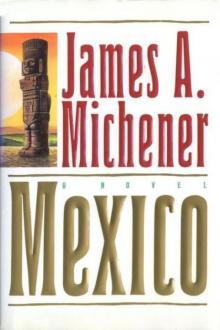 Mexico
Mexico The World Is My Home: A Memoir
The World Is My Home: A Memoir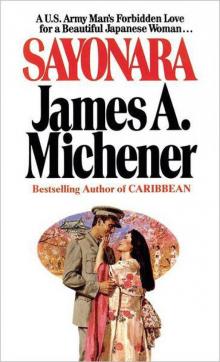 Sayonara
Sayonara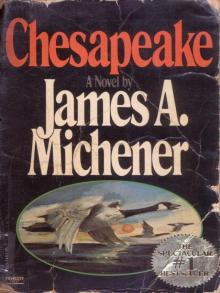 Chesapeake
Chesapeake The Novel
The Novel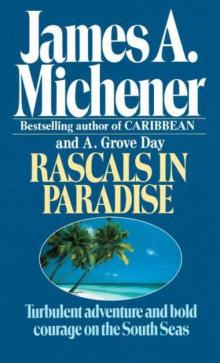 Rascals in Paradise
Rascals in Paradise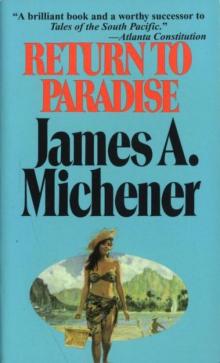 Return to Paradise
Return to Paradise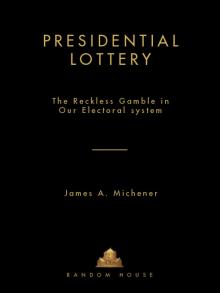 Presidential Lottery: The Reckless Gamble in Our Electoral System
Presidential Lottery: The Reckless Gamble in Our Electoral System The Source
The Source Poland
Poland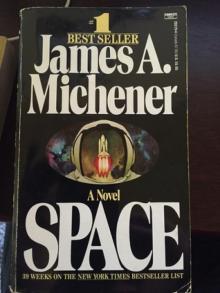 Space
Space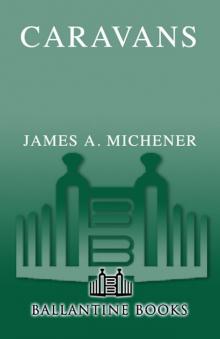 Caravans
Caravans Creatures of the Kingdom: Stories of Animals and Nature
Creatures of the Kingdom: Stories of Animals and Nature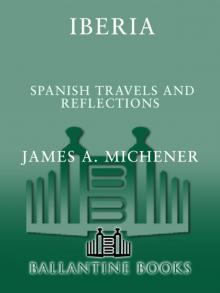 Iberia
Iberia Hawaii
Hawaii The Watermen: Selections From Chesapeake
The Watermen: Selections From Chesapeake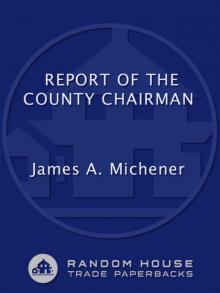 Report of the County Chairman
Report of the County Chairman The Covenant
The Covenant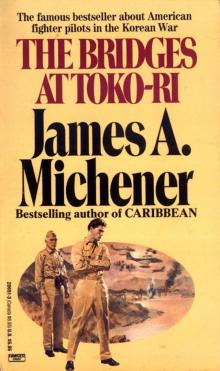 The Bridges at Toko-ri
The Bridges at Toko-ri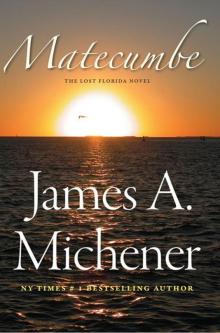 Matecumbe
Matecumbe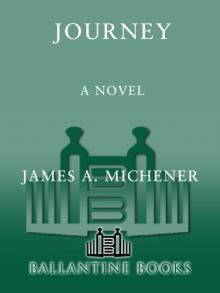 Journey: A Novel
Journey: A Novel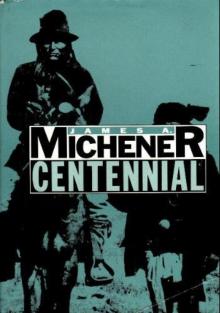 Centennial
Centennial Sports in America
Sports in America Texas
Texas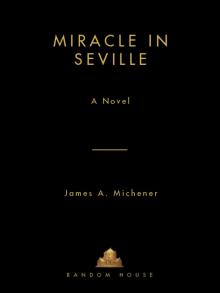 Miracle in Seville
Miracle in Seville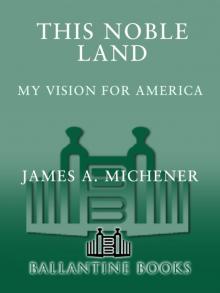 This Noble Land: My Vision for America
This Noble Land: My Vision for America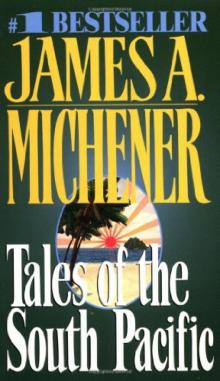 Tales of the South Pacific
Tales of the South Pacific Bridges at Toko-Ri
Bridges at Toko-Ri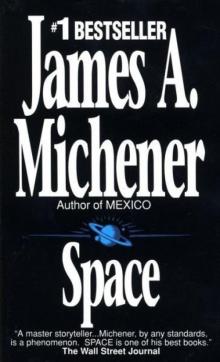 Space: A Novel
Space: A Novel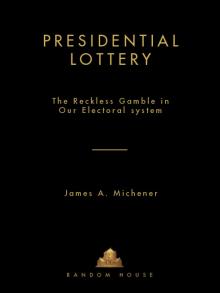 Presidential Lottery
Presidential Lottery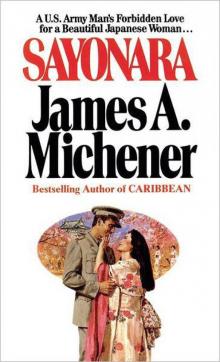 Sayonara: A Novel
Sayonara: A Novel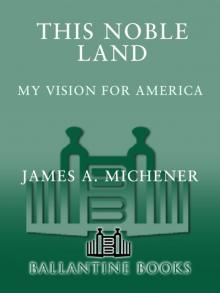 This Noble Land
This Noble Land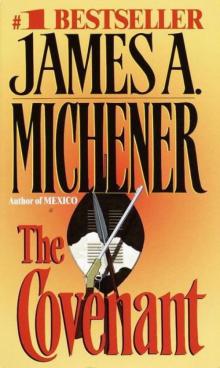 The Covenant: A Novel
The Covenant: A Novel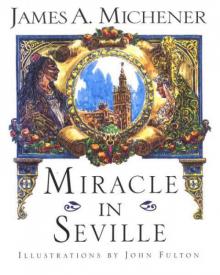 Miracle in Seville: A Novel
Miracle in Seville: A Novel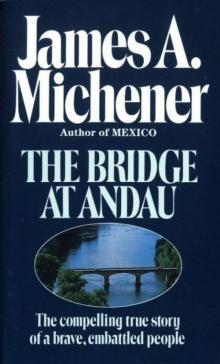 The Bridge at Andau
The Bridge at Andau Source
Source The Source: A Novel
The Source: A Novel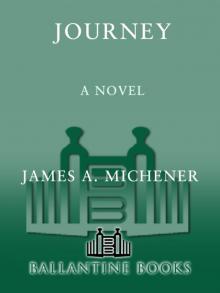 Journey
Journey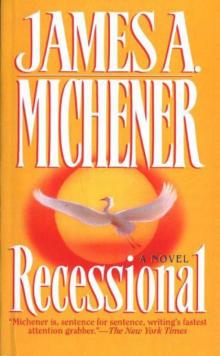 Recessional: A Novel
Recessional: A Novel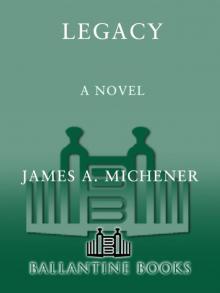 Legacy: A Novel
Legacy: A Novel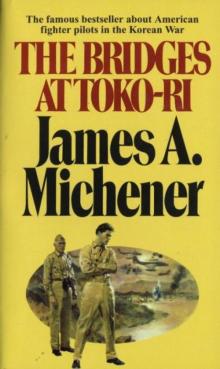 The Bridges at Toko-Ri: A Novel
The Bridges at Toko-Ri: A Novel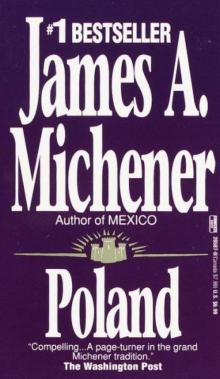 Poland: A Novel
Poland: A Novel